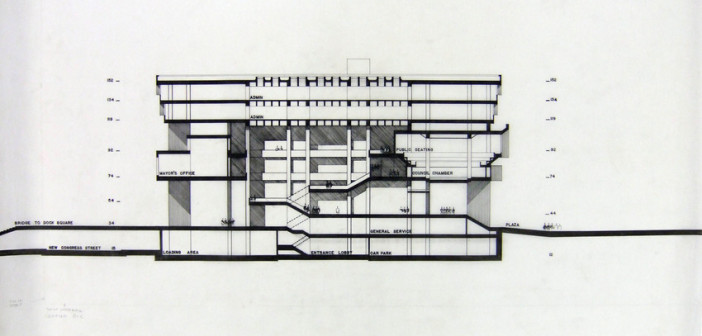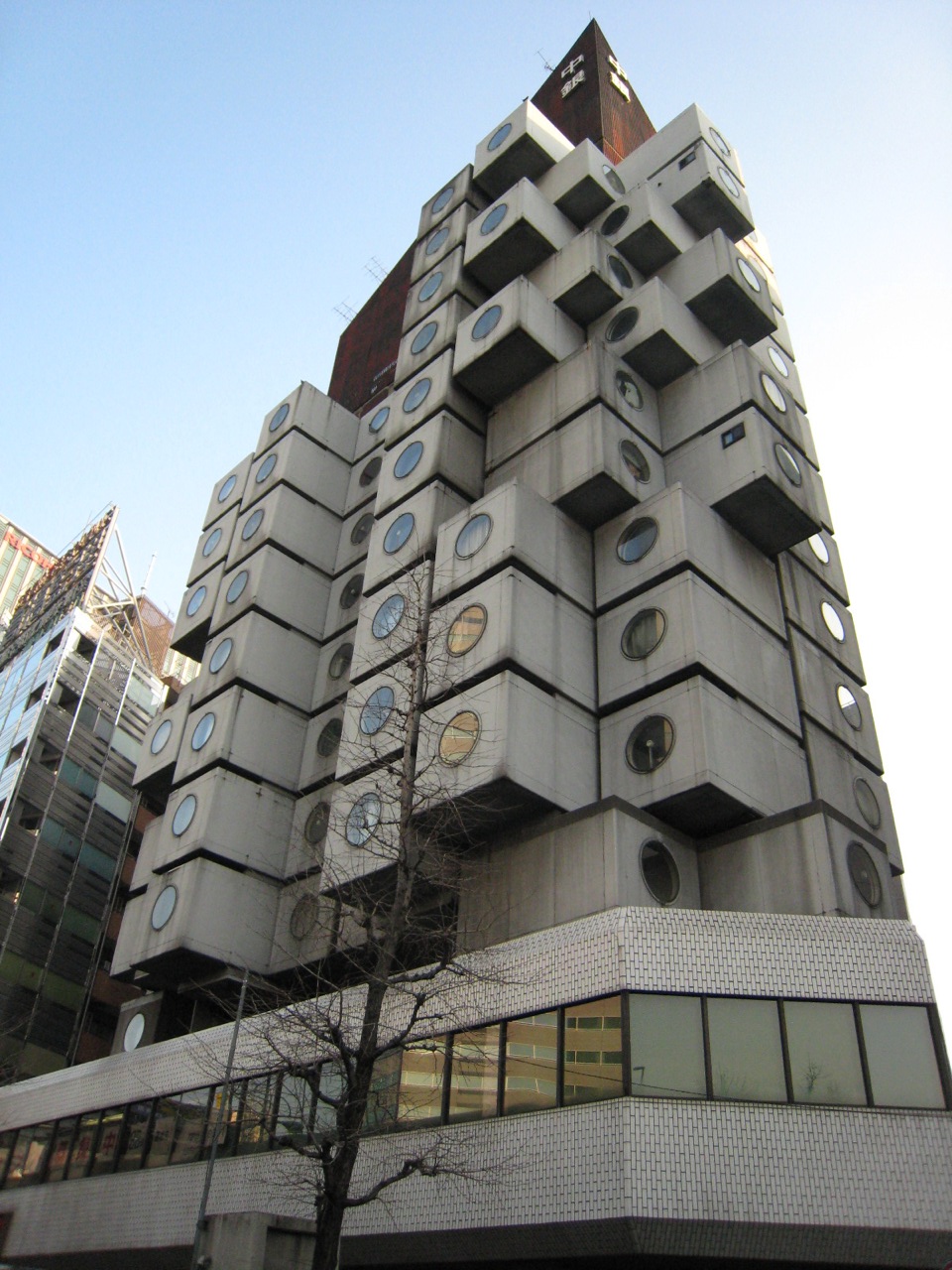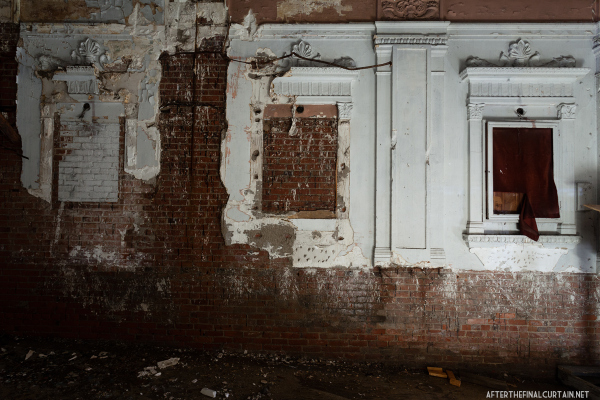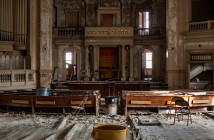Boston City Hall is the building Bostonians love to hate the most. As one of architecture’s "ugly" ducklings, Boston City Hall symbolizes the city’s coming of age in the late 1960s. It began in 1961 with a nationwide, juried competition that not only launched the careers of the city's young architects—Gerhard Kallmann, N. Michael McKinnell and Edward Knowles—but also brought provincial Boston into the twentieth century. The winning design announced to the world the aspirations of a city strongly attached to its puritanical heritage and its desire to become a modern metropolis. The story of Boston City Hall—its architects, politics and the struggles to save it for future generations—is nothing short of Heroic. A new exhibit at the Boston Society of Architects along with the current mayoral campaign, has re-ignited the conversation on Brutalism's future, its architectural merits and the historical significance of the architecture of the recent past. In Boston, City Hall is at the heart of it all.
"Boston detests its City Hall," wrote the late architecture critic Ada Louise Huxtable, in a 2009 essay praising the restoration of Yale University’s Art and Architecture Building by modernist architect Paul Rudolph. "Attacks on the beleaguered building include calls for its demolition by a mayor determined to get rid of it and a public persistently unconverted to modernism and particularly hostile to the Brutalist aesthetic," she continued. "(Déjà vu, anyone? Its predecessor, Boston's Victorian City Hall, was similarly detested and eventually saved and successfully recycled. Tastes change as surely as the seasons, only it takes a little longer.) The current City Hall is being systematically and willfully destroyed by abusive neglect, aggravated malfunction, and spreading bureaucratic blight. The trip from Boston to New Haven might as well be measured in light years as in miles; Boston remains obdurately clueless."

We remain obdurately clueless. In September 2013, Representative Martin J. Walsh, one of two candidates in the run to become the next Boston mayor, announced a proposal to sell City Hall Plaza to a private developer which may pave the way for the demolition of its most iconic building: City Hall. "You could put a hotel boutique here. You could put a full hotel here. You could have an office building. You could put so much in this area," Walsh told the Boston Herald. As Boston University doctoral candidate Brian Sirman points out in this essay published in Big Red & Shiny, Boston City Hall is "perennially criticized by Bostonians" and "[m]any say the building is ‘ugly,’ but there is little consensus on what makes it so."

Boston City Hall: Drawings by Kallmann and Knowles, curated by Boston architect Gary Wolf, AIA and first shown in a smaller scale at Wentworth Institute of Technology in 2008, celebrates City Hall as one of the greatest buildings in American architecture. It also celebrates the ingenuity of the only architectural firm to have been awarded six prestigious Harleston Parker Medals—Massachusetts' equivalent of the Pritzker Prize, if you will—including one in 1969 for Boston City Hall "for the most beautiful piece of architecture, building, monument or structure within the limits of the City of Boston or of the Metropolitan Parks District."
The more than 40 drawings gathered from the collections of Historic New England are supplemented by photographs of City Hall by Ezra Stoller, Peter Vanderwarker and others, "…reveal the origins of an architectural collaboration that would create a body of work as significant in Boston today as that of Charles Bulfinch or H.H. Richardson," writes curator Gary Wolf, AIA in one of the wall text panels. The architectural plans and drawings are revelatory, in that they shed light on the thought process behind the building’s design and the challenges and opportunities presented by the site itself and the competition guidelines.
"When we designed the City Hall, we envisioned not only a fragment of the city, but also a fragment in time. That is to say, we regarded the construction of the building to be the start of a process that would engage successive generations of the citizenry in the embellishment, decoration, and adornment of the robust armature that we had designed," reflected Gerhard Kallmann and N. Michael McKinnell in an essay published in the May/June 2005 City Hall issue of ArchitectureBoston." This, to our great regret, has not happened and perhaps we were naïve. But we are naïve still, and there is still time," they concluded.

Boston City Hall: Drawings by Kallmann McKinnell and Knowles is a handsome exhibition fit for a handsome building. Whether you love it or hate it, Boston City Hall is a landmark building of modern architecture and the drawings on display at the Boston Society of Architects serve as testaments of the City's commitment to supporting the work of young architects, a commitment very seldom made in a city like Boston.
Walking through the exhibit, it is astonishing to see how much the city believed in the bold vision of Kallmann, McKinnell and Knowles by comparing these early 1960s drawings to the building at Government Center today. "The jurors were unanimous in their selection. The business community bought into it unanimously," writes former ArchitectureBoston editor Elizabeth Padjen, FAIA in the magazine's City Hall issue. "And what is even more amazing, the building was built exactly as it was presented in the competition. Clearly something was happening in the city--as we know it from our recent experience, illustrious juries and commissions don't guarantee results."
The same political forces that gave birth to Boston City Hall in the 1960s have also been its worst enemy, neglecting and letting the building crumble for more than four decades. Even if you do not walk away from this exhibition with a different perspective on Boston City Hall, you should know that the building was never given the same chances the City and the illustrious jury who selected the winning design afforded Kallmann McKinnell and Knowles. We, Bostonians, have also never been given the same chance to engage "in the embellishment, decoration, and adornment of the robust armature" Kallmann McKinnell and Knowles designed. And while the building is flawed as it is, there is nothing Boston's world-renowned architecture firms cannot fix, upgrade and restore.
Boston City Hall: Drawings by Kallmann McKinnell and Knowles is on view through November 15, 2013 at the Boston Society of Architects' BSA Space.
All images drawn from the Kallmann, McKinnell and Wood architectural collection, 1950-1995, bulk 1960-1990 courtesy Historic New England.
Top: McKinnell, N. Michael (Noel Michael), 1935- (Draftsman) Section elevation preliminary stage competition drawing, Boston City Hall, Boston, Mass.
Center: Kallmann, Gerhard M. (Draftsman), Main lobby perspective final stage competition drawing, Boston City Hall, Boston, Mass.
Bottom: McKinnell, N. Michael (Noel Michael), 1935- (Draftsman) Perspective from southwest preliminary stage competition drawing, Boston City Hall, Boston, Mass.




